A Monogram P-51D
Proof you don't have to have the latest kit to get a nice model, if you're willing to put in the work. About 15 years ago, a friend gave me a bunch of old kits that he figured were good for spare parts. Among them was this kit, which I recognized from the crispness of the molding was likely a first-generation pop. There are a lot of problems with the kit - it's got "1970s fit", and the lower cowling part and the gun bay cover on the left wing only look OK after application of Bondo and serious sanding. I cut the flaps off and repositioned them down. When assembled, I polished the model and re-scribed the detail. With a bit of creative painting, the cockpit is "acceptable" from a few feet away. I used the Isradecals Mustang sheet to do this Suez War veteran.
A bit of history to accompany the model:
The 1956 Suez War has long been seen as a conflict between Israel and Egypt, with Israel responding to Egyptian “provocations” and guerilla raids by invading the Sinai Peninsula on October 29, 1956. Following Israeli tactical successes against the Egyptian Army, armed intervention by France and Great Britain was necessary to guarantee international access to the Suez Canal, leading to the first use of a threat to use strategic nuclear missiles by Nikita Khrushchev, resulting in the withdrawal of Anglo-French forces from the Suez Canal Zone and Israeli military forces from the Sinai.
As with much of “history,” this account does include actual events, but not in the proper context.
The real Sinai War was planned by Britain and France, with the cooperation of Israel, in order to expel Egyptian forces from the Suez Canal following its nationalization the year previously by the government of Gamal Abdel Nasser, in hopes that this war would lead to Nasser's fall. Instead, it led to the fall of British Prime Minister Anthony Eden, and is considered the “last gasp” of European imperialism in response to the anti-colonialist movements in the period after the Second World War.
For the Israelis, who really did wish to attack the Egyptians in response to numerous violations of the 1949 cease-fire, it was an opportunity to curry favor with major European governments, which could lead to a lessening of the isolation of Israel following the 1948 War of Independence. The Israeli armed forces clearly demonstrated tactical, strategic and technical superiority to the Egyptians in their thorough defeat of the Egyptian Army in Sinai. This led to the ten quietest years in the history of modern Israel, ended by the 1967 Six-Day War.
Israeli military thinking during the early years of the nation was open to daring “out of the box” thinking, due to the fact Israel was outnumbered and faced opponents who were better-armed following Nasser's deal with the Soviet Union for the supply of modern Soviet military equipment. One of the most daring missions ever carried out by any unit was the “wire busting” mission flown by the P-51D Mustangs of 116 "Ha'Kanaf Ha'Meofeef" (The Flying Wing) Squadron of the Heyl Ha-Avir on October 29, 1956.
Israel had obtained P-51D Mustangs from Sweden following their retirement from Flygvapnet in 1952, though at least two Mustangs had been obtained during the 1948 war from U.S. surplus stocks in Europe and were used in the closing stages of that war in 1949. Many of these Mustangs were veterans of World War II combat with the U.S. Eighth Air Force, inasmuch as the Swedes had purchased them direct from post-war airfields in 1946 as U.S. units were disbanded and returned home. The Mustangs supplemented Spitfires that had been obtained during the 1948 War.
By 1956, Heyl Ha-Avir had obtained Ouragan and Meteor jet fighters and was beginning to equip with the Dassault Mystere IVA. The Mustangs were considered obsolete and placed in storage that Spring as units re-equipped with the more modern jets, with 105 Squadron becoming the OTU for P-51s and the only regular unit still using the aircraft.
116 Reserve squadron was formed at Ekron (Tel Nof) in February 1956, manned by flying instructors from the flight school there, when 101 Squadron relinquished their P-51D Mustangs to re-equip with the first Mystere IVA aircraft. The newly-transferred P-51s were given a new camouflage paint scheme, in contrast to the natural metal finish in which they had served since their arrival in Israel. Some of the ex-101 Squadron aircraft retained the red/white rudder stripes of their original operator.
Given that the experience level of the 116 Squadron pilots was high, the unit was chosen to carry out a difficult and very dangerous mission, to attack Egyptian communications in the Sinai peninsula upon the outbreak of hostilities. The low-level mission would involve the aircraft having a 100-foot metal cable attached to the rear fuselage, in order to tear down the above-ground telephone wires by which the Egyptians communicated. If an aircraft managed to wrap its dragged cable around a telephone pole, or get it tangled in phone lines, the result would be a crash under conditions where the pilot would have little chance of surviving impact with the ground. Even more daunting, the mission would begin in darkness.
The mission, the first combat action of the war, was completely successful, with all aircraft returning to base. Egyptian battlefield communications nearly ceased as a result, which led directly to the success of the Israeli armored units against the Egyptians, resulting in the Israeli forces overrunning the Sinai in less than 72 hours of combat.
Although the airplanes were obsolescent in the face of Egyptian MiGs and Meteors, the P-51s fought with distinction throughout the campaign, providing intensive ground attack operations in direct support of the ground forces. Of the 29 aircraft available in 105 and 116 Squadrons on October 29, nine were lost in the short war, further proving that the Mustang with its liquid-cooled engine and vulnerable radiator was not really suited to the ground attack role. Despite perceived obsolescence, the P-51s remained in service until the fall of 1958, with 116 Squadron being the last to operate Mustangs.
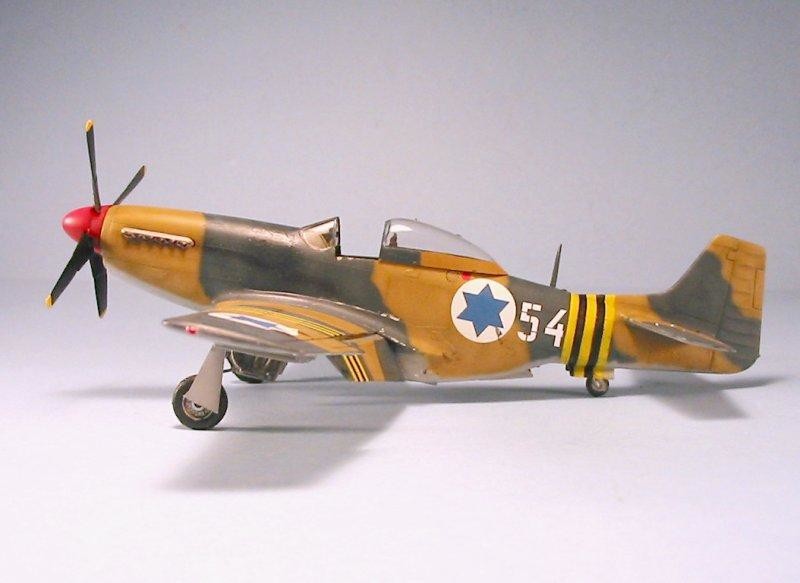
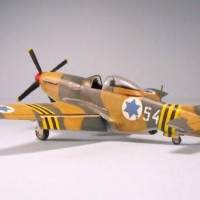
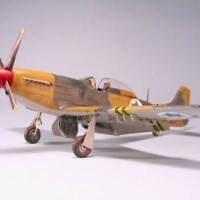
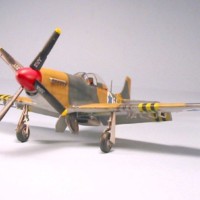
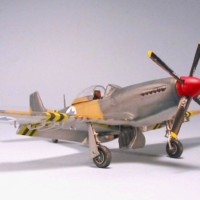
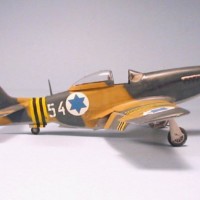
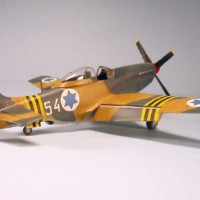
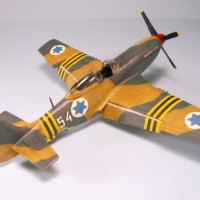
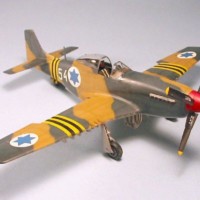
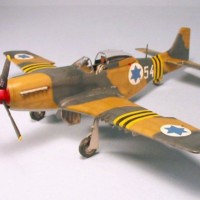
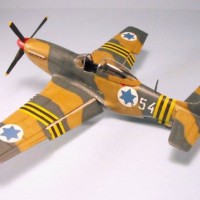
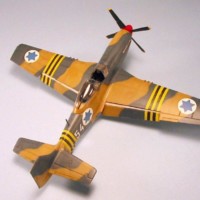
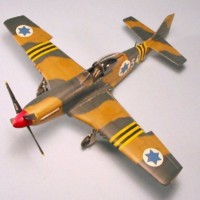
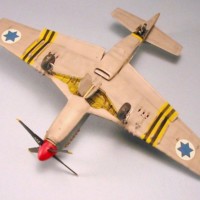
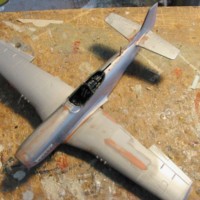
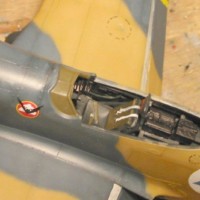
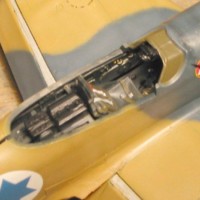

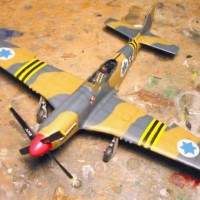
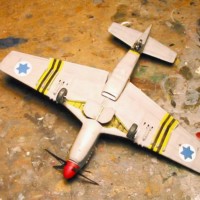
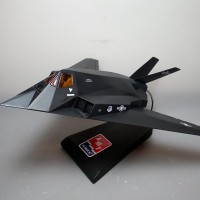
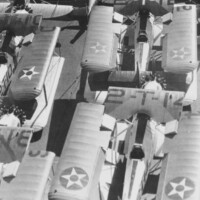
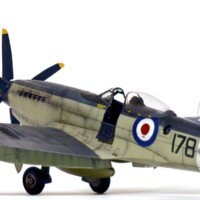
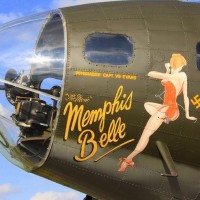
A uniquely adorned Mustang...can't go wrong with anything from Monogram IMO. It always was - in my estimation - the top domestic producer of plastic models.
Yeah, you're right. Too bad they didn't get to survive into the upgrade of the hobby past the Helldiver.
Another nice Mustang Tom. I really like Israeli livery on almost any type, and this is one I may have to model before long!